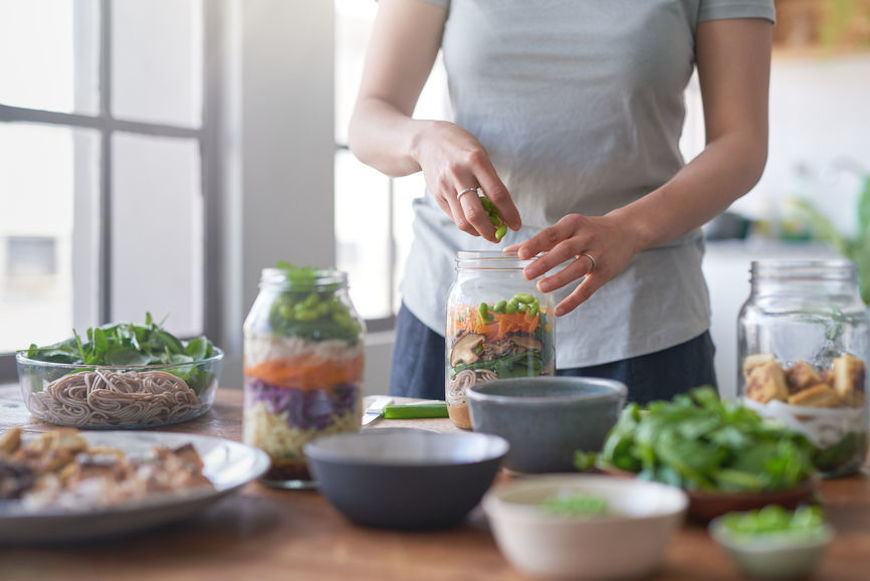
September 14, 2019 at 06:00PM by CWC
Even if the rest of your life seems to be in disarray, grabbing a meal-prepped salad out of the fridge for lunch somehow can make you feel like you have it all together. It radiate vibes of, I am someone who meal preps on Sundays. I’m an organized boss. The downside of pre-prepared salad: It tastes great the first day or so…until it starts to get limp and soggy.
A fork full of wilted lettuce is just…sad. Fortunately, registered dietitian and meal prep expert Lindsay Livingston, RD, has some tips on how to keep the salad in your fridge fresh for longer than just a few days.
How to keep salad fresh when you’re meal prepping
1. Keep the dressing separate
According to Livingston, drowning your greens in dressing ahead of time is a sure way to shorten a salad’s lifespan. “You want to keep the dressing separate until right before serving,” she says. Invest in a small container that you can pour your dressing in versus pouring it onto your greens during meal prep or in the morning before you head out the door. “Another option is to make mason jar salads and layer the dressing at the very bottom, toppings in the middle, and greens on top and then dump into a bowl and mix just before serving,” Livingston adds.
2. Dry your greens thoroughly before putting them away
Drying your salad base after washing it—whether it’s between towels or with a salad spinner like Livingston—is key to ensuring freshness several days in a row. Damp spots on your lettuce can become a breeding ground for bacteria, making it sad and slimy (and, you know, inedible).
3. Store your lettuce in a resealable bag
ADVERTISEMENT
ADVERTISEMENTKate Spade Autumn/Winter Sale |
Once you’ve dried your greens well, Livingston recommends gently wrapping them in a dry paper towel to help soak up moisture that can lead to faster wilting. “What I do is, I cut or tear the lettuce, wash it, spin it dry, and store it in a sealable container with a paper towel, with all the air removed from the bag before sealing,” she says. Keeping the air out will help further ward off early spoilage, she adds.
You know what makes a great salad dressing? Olive oil. Here’s the lowdown on its benefits:
4. Wait to add toppings until day-of
Different salad add-ins have different lifespans, and Livingston says it’s worth knowing which ones are long lasting and which ones aren’t. “Most vegetables, such as carrots, peppers, onion, radishes, cucumbers and tomatoes should hold up well,” she says, saying that these are all fine to mix together with your greens on Sunday. (She adds that grains such as farro and quinoa also last.)
On the other hand, avocado, apples, and other fruit that you cut into turns brown quickly; it’s better to add these the day you’re eating the salad, instead of too many days in advance, she says. If you do want to add fruit in advance, she says to stick to berries, which don’t require slicing open.
5. Store ready-to-eat salads in glass instead of plastic
Remember Livingston’s insight about how oxygen causes lettuce to go bad quicker? This is why what you store your salads in matters so much. While a lot of office fridges are full of plastic containers, Livingston says glass does a better job of keeping moisture out. “Mason jars work well or a glass Pyrex bowl that seals tight with a lid,” she says.
Keeping these five tips in mind while meal prepping your food for the week will have your lunch looking and tasting good past the first couple days. Sad desk salad? You don’t know her.
Use this four step formula to get our of a rut when you’re sick of salad. Or, try one of these wellness influencers’ go-tos.
Author Emily Laurence | Well and Good
Selected by CWC
ADVERTISEMENT
ADVERTISEMENTUp to 30% off Gift Sets |







